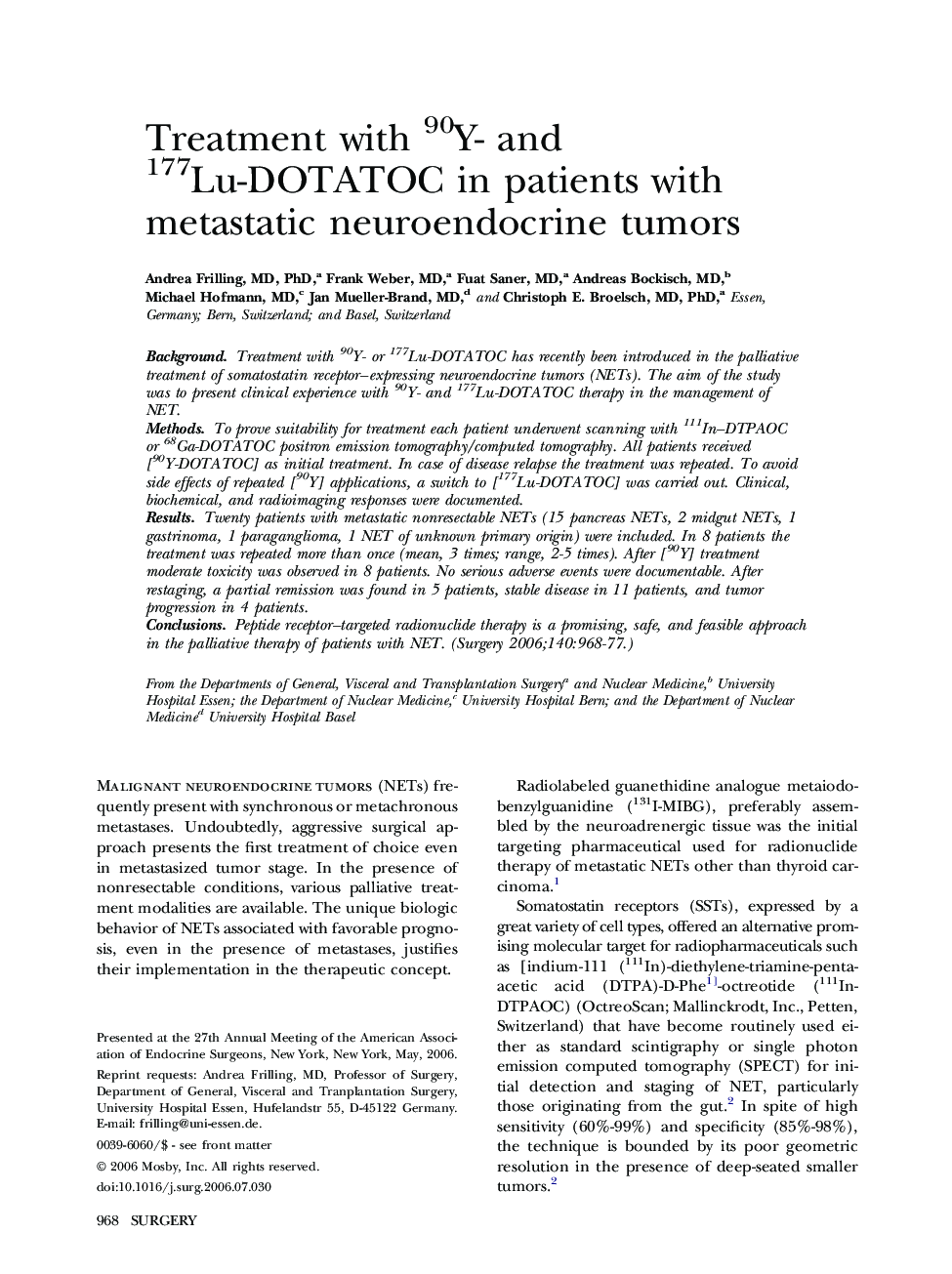| Article ID | Journal | Published Year | Pages | File Type |
|---|---|---|---|---|
| 4310463 | Surgery | 2006 | 10 Pages |
BackgroundTreatment with 90Y- or 177Lu-DOTATOC has recently been introduced in the palliative treatment of somatostatin receptor–expressing neuroendocrine tumors (NETs). The aim of the study was to present clinical experience with 90Y- and 177Lu-DOTATOC therapy in the management of NET.MethodsTo prove suitability for treatment each patient underwent scanning with 111In–DTPAOC or 68Ga-DOTATOC positron emission tomography/computed tomography. All patients received [90Y-DOTATOC] as initial treatment. In case of disease relapse the treatment was repeated. To avoid side effects of repeated [90Y] applications, a switch to [177Lu-DOTATOC] was carried out. Clinical, biochemical, and radioimaging responses were documented.ResultsTwenty patients with metastatic nonresectable NETs (15 pancreas NETs, 2 midgut NETs, 1 gastrinoma, 1 paraganglioma, 1 NET of unknown primary origin) were included. In 8 patients the treatment was repeated more than once (mean, 3 times; range, 2-5 times). After [90Y] treatment moderate toxicity was observed in 8 patients. No serious adverse events were documentable. After restaging, a partial remission was found in 5 patients, stable disease in 11 patients, and tumor progression in 4 patients.ConclusionsPeptide receptor–targeted radionuclide therapy is a promising, safe, and feasible approach in the palliative therapy of patients with NET.
